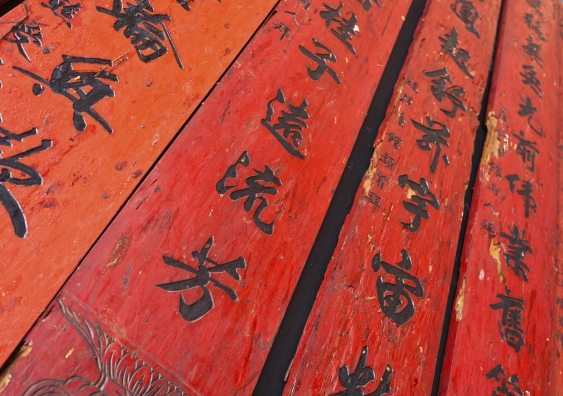Smarter engagement with Asia
Actively engaging diasporas and tapping into their latent Asia literacy is central to breaking Australia's vicious cycle of monolingualism, write Kirrilee Hughes and Kent Anderson.
Actively engaging diasporas and tapping into their latent Asia literacy is central to breaking Australia's vicious cycle of monolingualism, write Kirrilee Hughes and Kent Anderson.

Fran Strachan
Communications Manager Low Carbon Living CRC
+61 2 9385 5402
fran.strachan@unsw.edu.au
OPINION: Soft science, technology, engineering and maths education is making Australia vulnerable, but recent work shows the same can also be said of our languages education, especially regarding our engagement with Asia. Thanks in no small part to Chief Scientist Ian Chubb’s awareness raising, it looks like our education systems, with rare bipartisan support, will tackle the crisis in STEM education. It is equally critical to apply the same laser-sharp focus to our languages education and a new report on ‘smart’ Asia literacy commissioned by the Chief Scientist is doing exactly that.
The good news is we have the resources for success in language learning already invested and embedded in the diaspora of our schools and community.
Australia has a poor record of languages education. Since language policies were first set in this country in the mid-1980s, not one language learning target has been achieved. Participation rates in Asian languages education or Asia literacy, which have been singled out for priority since the mid-1990s, have remained stubbornly low and reflect that Australians overwhelmingly rely on English in engaging with the Indo-Pacific.
Don’t get us wrong: English is important and we are a lucky country to have it as our inherited lingua franca. But, Australians seem wed to the idea that competency in one language — English — is smarter than competency in more than one language; that monolingualism trumps multilingualism. In other fields, including STEM, we would rarely accept the notion that less knowledge or lower competency is a smarter alternative.
While English has indisputably become an Asian language and is used widely across the Indo-Pacific region, proficiency levels vary enormously. Languages education remains essential for Australia; being monolingual in English is no longer adequate in an increasingly interconnected Indo-Pacific region in which multilingualism is the base skill level for pretty much everyone in the neighbourhood but us.
Conventional responses to low participation in Asian languages education emphasise our deficits, not our assets. We bemoan that we don’t have enough language teachers and our students are not naturally inclined or geographically advantaged the way kids in Europe are.
By emphasising our Asia illiteracy, however, we miss a critical point. We’ve already have a fantastic stock of linguistically capable and predisposed teachers and students right here who can leverage the whole system out of its monolingual rut.
Smart engagement with Asia breaks the vicious circle of monolingualism. Smarter inclusion of the growing presence of Asian diasporas in Australia, and the Australian diaspora in Asia, are the circuit breakers to declining participation rates in Asian languages education.
Hindi provides a useful example. The 2012 Gillard Government’s ‘Australia in the Asian Century’ White Paper prioritised Hindi language education, along with Chinese, Japanese and Indonesian, in Australian schools and universities. What this report omitted, however, was how we are to increase participation in Hindi education and, in particular, the ways in which Australia’s rapidly growing Hindi-literate population might contribute to and participate in solutions.
A conventional framing of this issue would lament the current lack of qualified Hindi teachers and other language learning resources in Australian schools and universities. Moreover, it would be dismissive and cynical of those students with a heritage or environmental predisposition to excelling at Hindi. In contrast, a focus on the Hindi-speaking diaspora residing in Australia would help unlock the potent — yet latent — Hindi literacy, which already exists within our population. And, we would celebrate the migrant and heritage learner of Hindi.
Asian diasporas can play several important roles in nurturing ‘smarter’ Asia literacy in Australia. First, they present Australia as an inherently multilingual society and highlight the complex yet valuable language diversity within the broader Indo Pacific. Second, with additional specialised teacher training, diaspora members can assist to boost the stock of qualified Asian languages teachers and act as living language resources, thereby becoming circuit breakers to declining participation in Asian languages education. Third, students who are members of Asian diasporas can contribute to language learning as tutors, mentors and language partners to lift the rest of us.
There cannot be an over reliance on diaspora as a single solution to smarter Asia literacy in Australia; this needs to be part of a broader strategy. Inclusion of Asian diasporas in Asia literacy initiatives should complement and not substitute broader people-to-people links between Australians and citizens living within the Indo Pacific.
There is a need, however, to act now. Because of the pressure to assimilate into (monolingual) English-speaking society, diaspora members lose their multilingualism. Their capacity to operate in multiple languages rapidly declines by the second generation and is almost wiped out by the third. Multilingualism within Asian diasporas in Australia must be valued and sustained, and not looked on with suspicion or a sense of unfair advantage. After all, would we begrudge the Nobel winner John Nash or Fields winner Terence Tao’s natural inclination to maths, the way we do of our Chinese heritage learners of Mandarin?
A smarter approach to languages education in Australia lies in the active engagement of diasporas and their latent Asia literacy. This approach opens new possibilities to provide a more positive, participatory and ‘smarter’ future for Asia languages education in Australia. Given the pre-existing latent assets in our community, success in languages education might even be quicker than in STEM.
Dr Kirrilee Hughes is an Indonesia specialist at UNSW and Professor Kent Anderson is deputy vice-chancellor (community and engagement) at the University of Western Australia. This opinion piece first appeared in The Australian.